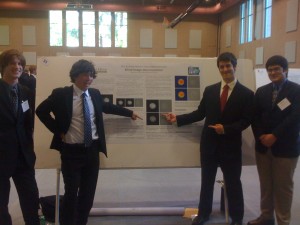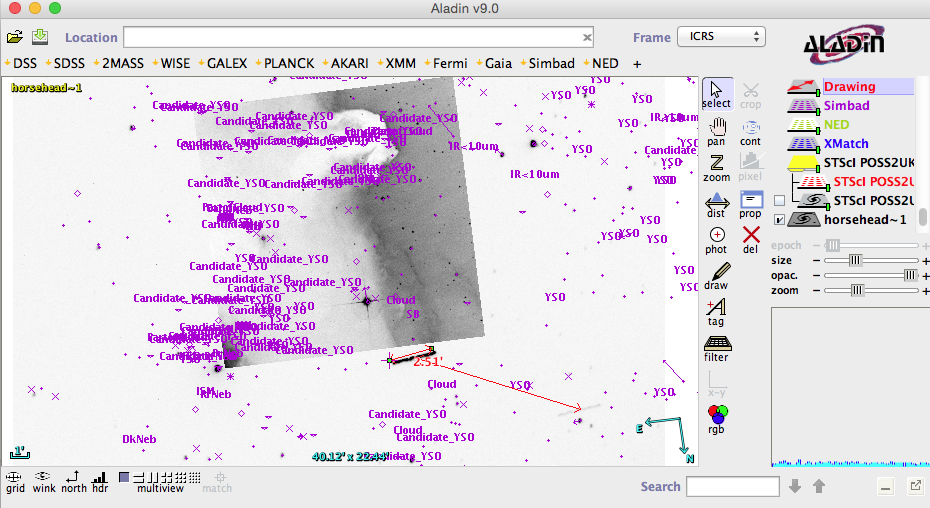AIDA: A Projects Day at Harvey Mudd College
Happy Earth Day 2010 – Earth"Spheres" from Space
April 22, 2010Keck AO Observations: Io Volcanism – "Mornes plaines"
July 15, 2010A new post on this blog is long overdue. I am busy as usual but I have been as well traveling a lot recently… and it is not over. Before telling you about my great trip at ESA-Madrid where I was a few days ago, I would like to mention recent developments in our numerical deconvolution method, called AIDA, which was done in collaborations with a group of students from the Clinic program Harvey Mudd College.
On May 4th, I attended the Project Day at HMC, a private college located in southern California in Claremount which offered several maths, science and engineering majors. “Mudd”, as the students call it, maintained a specific program called Clinic to involve their student in practical projects in collaboration with industries and research laboratories. Eliot Young, a researcher at SWRI, submitted one project to this interesting program to test and improve AIDA.
AIDA is a deconvolution algorithm, product of a collaboration with the fluorescent microscopy group of John Sedat at UCSF that we developed in 2007 (See Hom et al, 2007). Four students, Jeffrey Burkert, Bryce lamp, Taiki Sakai, and Jason Wyman worked on this project under the supervision of their Mudd Professors: Weiqing Gu and Hank Krieger.
They tried to implement several new techniques to improve the deconvolution of an image of Io, satellite of Jupiter known for its active and exotic volcanism. This observations was taken recently by my group with the Keck II 10m telescope on August 16 2009. They showed that the implementing a finite-difference algorithm in AIDA code significantly improved the data processing and revealing a clear signature of an active volcano (named Loki)
Below, you can see the images before and after applying the deconvolution algorithm, the improvement in sharpness after applying AIDA is obvious.
basic-processed image [right] after applying AIDA”]![Io, satellite of Jupiter observed with the Keck II AO system on August 16 2009. [left] basic-processed image [right] after applying AIDA](http://www.cosmicdiary.org/fmarchis/files/2010/06/ds9-300x207.jpg)
Most of the images collected with Adaptive Optics are processed at posteriori to improve their quality and to reveal fine details. We have been using AIDA on a wide variety of images in astronomy collected with from HST, Keck AO, VLT AO. This algorithm is in fact directly derived from MISTRAL (developed by a team at ONERA). Our more efficient and stable open-source program (code in Python with a few modules in C) is also used by biologists to process microscopic fluorescent images. Working with this group, I was amazed to see that they can now collect real time movies showing the dynamics of the yeast microtubule or the reaction of cells in the retina of human eyes. Like us, astronomers, for their data analysis they also need to reveal the finest features in the images.
This work initiated in 2007 has been an enlightening experience to me. It clearly revealed that the world of science is connected. Even if we do not share the same scientific interests, astronomers and biologists, as all scientists, have the same needs, therefore we often wish to develop the same tools.
Franck M.




1 Comment
I have a great philosopher and astronomer here whom I know you’ll be interested with. Guillermo Haro (also known as Guillermo Haro Barraza) is considered to be one of the most influential Mexican astronomers of the 20th century with all his remarkable contributions to the field of astronomy. Even though he finished Philosophy at the Universidad Nacional Autonoma de Mexico, he still pursued his passion for astronomy after he graduated. His most famous works include his researches on flare stars, faint blue star-like object that emit different radio waves and UV radiation, blue galaxies and planetary nebulae.